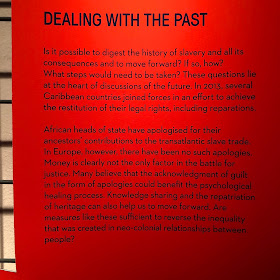Seven years ago, I posted my first call offering an annual mentorship. I decided to do so because I wanted some control over any influence I could have in the future of the field. I'd gotten several conference session proposals rejected--ones I thought were great--and I came up with the idea and thought I'd float it and see what would happen.
The result: over those seven years, hundreds of you have applied, and I've had the chance to spend time each year working with one or two incredible colleagues at different stages in their careers. I always felt I learned as much--if not more-- from our monthly calls as the mentees did. Here's looking at all of you--I have loved talking with you once a month, meeting you in person when I can, hearing your career updates--every bit of it! Giant bouquets of flowers to Alicia, Tania, Catherine, Claire, Megan, Tadia, Amanda, Susan, Shakia, Doreen, Hannah, and David for your enthusiasm, commitment and energy. Some mentees dropped away, and that's okay too (aside from the ghosting thing)--our lives are all complicated and it may have been not the right thing.
But I've decided to not do a mentorship call for 2020. As all of you may have noticed, I blog much less these days--and that's partly because my job at the International Coalition of Sites of Conscience is consuming in all good ways, but leaves me less band-width for other things. I'll be back, I hope, in 2021 looking for new mentees to connect with.
At the same time, there are also changes coming to Take 5, the monthly newsletter of ideas produced by our Gang of Five, five colleagues who initially came together to share and support our own work. The years together have been so important as sources of support and inspiration. Again, it's primarily a question of time for me, and I'm so pleased to announce that the incredible Anne Ackerson will continue to produce it--so if you don't receive it already, do subscribe here!
My first 2020 goal? Catching up on blog posts about museum visits in 2019. And after that, to blog more regularly. Stay tuned.
My second goal? Convincing more of you to be mentors. The Getty Leadership Institute will soon be launching Polaris, described as "a new online mentoring program that will be available to museum professionals across the U.S. Those working in or with museums can develop leadership skills and collegial relationships by being mentored or by mentoring others," supported by a grant from the Institute of Museum and Library Services.
My third goal? to continue to connect with and learn from museum colleagues, social justice activists, artists, and everyone working to make a better world. If you're any of those type of people and want to have an informal conversation about those issues--be in touch. I do love, to be honest, random conversations.
I'll end this post with deep gratitude to my Take 5 gang: Anne, Marianne, Carolyn, and Gwen (and another member of the original group, Christopher) and all my mentees. You're the best!























